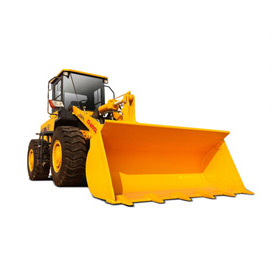cable crosslinking equipment
Understanding Cable Crosslinking Equipment
Cable crosslinking is an essential process in the manufacturing of various types of cables, particularly those used in electrical insulation, telecommunications, and power distribution. Crosslinking enhances the physical properties of the cable, making them more durable, heat-resistant, and chemically stable. As technology continues to advance, the equipment used for cable crosslinking has evolved significantly, offering increased efficiency, precision, and adaptability to meet the growing demands of the industry.
What is Cable Crosslinking?
Cable crosslinking involves the process of chemically bonding polymer chains in a cable material. This process transforms linear polyethylene (PE) into crosslinked polyethylene (PEX), improving its mechanical strength, thermal stability, and resistance to environmental factors. Crosslinking methods can involve various techniques, including radiation, chemical crosslinking agents, or thermal processes. The choice of method often depends on the intended application of the cable and the properties required for optimal performance.
Types of Cable Crosslinking Equipment
There are several types of equipment used in cable crosslinking, each designed for specific processes and materials. Below are some of the most commonly used types
1. Radiation Crosslinking Equipment This type of equipment utilizes high-energy radiation, such as gamma rays or electron beams, to induce crosslinking in the polymer material. Radiation crosslinking is often favored for its ability to produce a uniform crosslinked structure without the need for chemical additives.
2. Chemical Crosslinking Equipment This equipment uses chemical agents, such as peroxides or silane, to facilitate crosslinking. Typically, this method is employed in processes involving larger volumes of materials and is suitable for producing PEX in tubing and other applications. Chemical crosslinking often requires additional processing stages such as curing and foaming.
3. Heat-Activated Crosslinking Equipment This equipment relies on elevated temperatures to enable crosslinking reactions. Heat-activated methods can be highly effective but require careful temperature control to avoid thermal degradation of the polymer. This type of equipment is commonly used in the production of wire and cable with specific performance requirements.
4. Steam Crosslinking Equipment This process involves the use of steam to heat and activate crosslinking agents present in the polymer. Steam crosslinking is particularly effective for large-scale productions, where efficiency and consistency are critical. Equipment designed for steam crosslinking often includes chambers that control the humidity and temperature required for optimal results.
Importance of Cable Crosslinking Equipment
cable crosslinking equipment

The significance of advanced cable crosslinking equipment cannot be overstated
. With the growing reliance on electrical systems and the increasing need for reliable and efficient cable products, manufacturers must invest in modern equipment to ensure their products meet regulatory standards and consumer expectations.The right crosslinking technique and equipment can lead to several advantages, including
- Enhanced Mechanical Properties Crosslinked cables are inherently stronger and more resistant to wear and tear, enabling them to perform in demanding environments.
- Increased Thermal Stability The improved heat resistance of crosslinked materials allows for the safe operation of cables in high-temperature applications, reducing the risk of insulation failure.
- Chemical Resistance Crosslinked cables exhibit better resistance to chemicals and environmental factors, making them ideal for use in outdoor settings or in industries where exposure to harsh substances is common.
Future Trends in Cable Crosslinking Equipment
As the cable industry continues to evolve, so too will the technology surrounding cable crosslinking equipment. Innovations in materials science and engineering are driving the development of more efficient and environmentally friendly crosslinking methods. Additionally, automation and digital monitoring systems are expected to enhance the precision and efficiency of crosslinking processes, reducing waste and improving product quality.
Moreover, as sustainability becomes a key focus for industries worldwide, the demand for recyclable and biodegradable materials presents new challenges for cable manufacturers. The evolution of crosslinking technologies will play a critical role in addressing these challenges, ensuring that the future of cable production aligns with greener practices.
Conclusion
Cable crosslinking equipment stands at the forefront of modern cable manufacturing technology. By enhancing the properties of cable materials and meeting the demands of contemporary applications, this equipment not only ensures the longevity and reliability of cables but also paves the way for future advancements in electrical and communication systems. As the industry continues to evolve, the focus will remain on efficiency, sustainability, and adaptability to meet ever-changing market needs.
-
Why the Conductor Resistance Constant Temperature Measurement Machine Redefines Precision
NewsJun.20,2025
-
Reliable Testing Starts Here: Why the High Insulation Resistance Measuring Instrument Is a Must-Have
NewsJun.20,2025
-
Flexible Cable Flexing Test Equipment: The Precision Standard for Cable Durability and Performance Testing
NewsJun.20,2025
-
Digital Measurement Projector: Precision Visualization for Modern Manufacturing
NewsJun.20,2025
-
Computer Control Electronic Tensile Tester: Precision and Power for the Modern Metal Industry
NewsJun.20,2025
-
Cable Spark Tester: Your Ultimate Insulation Assurance for Wire and Cable Testing
NewsJun.20,2025
 Copyright © 2025 Hebei Fangyuan Instrument & Equipment Co.,Ltd. All Rights Reserved. Sitemap | Privacy Policy
Copyright © 2025 Hebei Fangyuan Instrument & Equipment Co.,Ltd. All Rights Reserved. Sitemap | Privacy Policy
